All products featured are independently chosen by us. However, SoundGuys may receive a commission on orders placed through its retail links. See our ethics statement.
Nothing Headphone (1) vs Bose QuietComfort Ultra Headphones: Can the $299 upstart beat Bose?
July 11, 2025


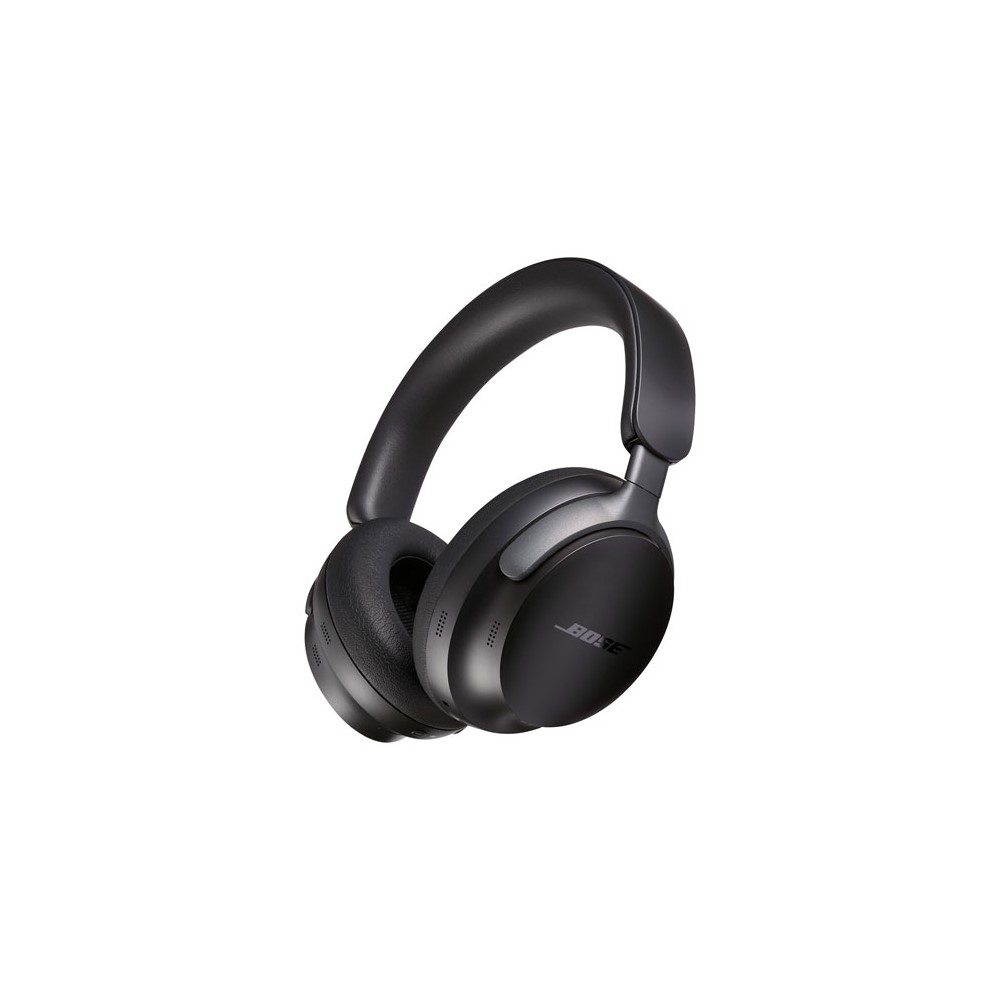

If you’re in the market for a premium pair of over-ear headphones, the Nothing Headphone (1) and Bose QuietComfort Ultra Headphones both demand attention for very different reasons. Nothing enters the over-ear space with a bold, retro-futuristic design and a surprisingly practical feature set, while Bose sticks to its roots with an understated aesthetic and refined ANC performance. I tested both and found strengths and weaknesses you’ll want to weigh carefully. Let’s break it all down.
This article was originally published on July 11, 2025, and this is the first version.
What’s it like to use the Nothing Headphone (1) compared to the Bose QuietComfort Ultra?
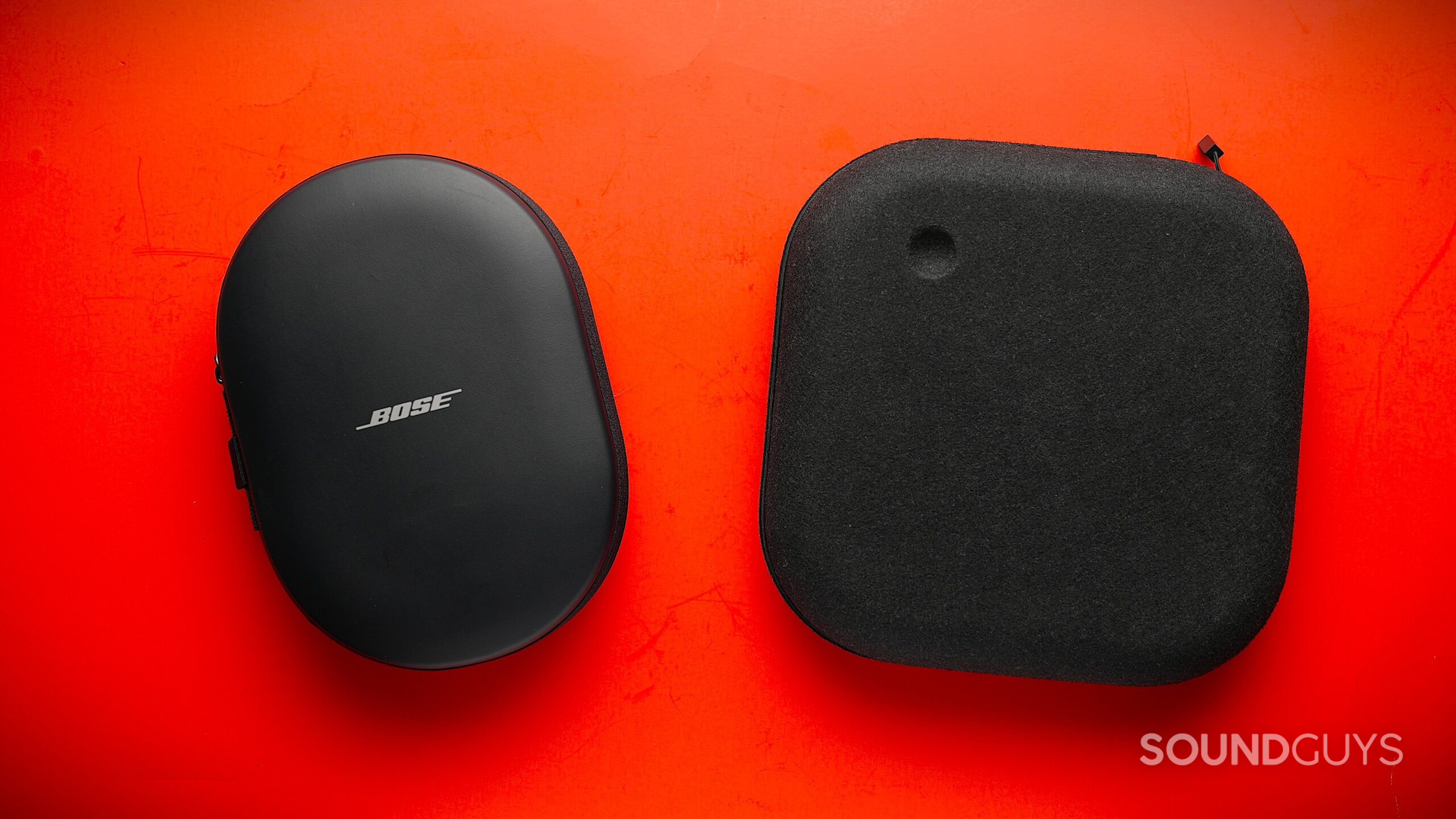
The Nothing Headphone (1) is an immediate conversation starter with its squared-off aluminum and see-through plastic design. I loved how the tactile controls brought back a satisfying physicality to adjusting volume and playback with its roller and paddle. However, the weighty design and inability to fold make them slightly less portable, taking up more room in your bag.
Bose’s QuietComfort Ultra, on the other hand, embraces minimalism. Both headphones have ample cushioning that comfortably accommodates glasses wearers, but the Bose feels lighter to wear at just 253g. They also primarily use touch and swipe controls to control playback, which felt less precise than Nothing’s buttons.
| Action | Multi-function button | Bluetooth / Power button | Volume strip |
|---|---|---|---|
| Action Single tap | Multi-function button Play / pause | Bluetooth / Power button Battery level check | Volume strip N/A |
| Action Double tap | Multi-function button Track forward | Bluetooth / Power button N/A | Volume strip N/A |
| Action Triple tap | Multi-function button Track backward | Bluetooth / Power button N/A | Volume strip N/A |
| Action Long press | Multi-function button ANC mode change | Bluetooth / Power button On / off | Volume strip Shortcut (define in app) |
| Action Swipe | Multi-function button N/A | Bluetooth / Power button N/A | Volume strip Volume up / down |
Overall, Nothing’s headphones feel more experimental and fun, while Bose’s approach is more subtle and about staying out of the way.
Do the Nothing Headphone (1) or Bose QuietComfort Ultra have more features?
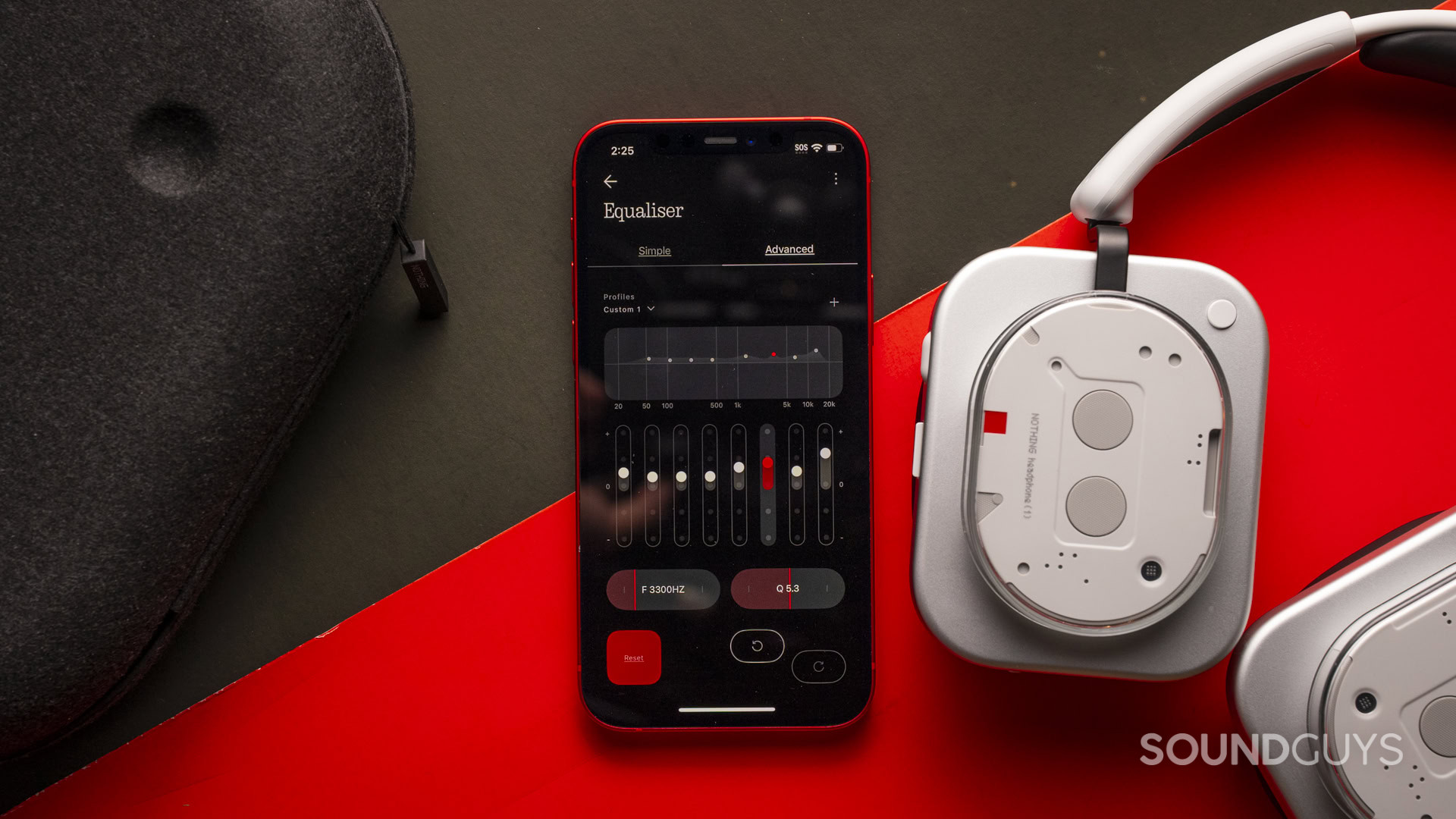
Nothing packed its debut headphones with unexpected features like IP52 water and dust resistance and an advanced 8-band EQ in the companion app. You also get fun extras like custom QR codes to share EQ profiles. Bose skips water resistance entirely, making them ill-suited for the gym. However, it focuses on high-end wireless audio with aptX Lossless and Snapdragon Sound support, making it ready for high-resolution streaming.
Both headphones have spatial audio with head tracking, but I found the feature better suited for movies or mobile gaming than music listening, which often comes across as gimmicky. For Nothing Phone (3) owners, there are exclusive perks like Essential Space for voice notes and Channel Hop, which lets you switch between audio apps with a tap.
How do the Nothing Headphone (1) and Bose QuietComfort Ultra connect?

Both headphones use Bluetooth 5.3 for wireless connections, but their wired options differ. Nothing includes both USB-C audio and a 3.5mm jack, supporting SBC, AAC, and LDAC for high-resolution wireless listening. I loved using USB-C audio with my phone or laptop. Bose only offers analog 2.5mm to 3.5mm wired playback and doesn’t support USB-C audio, which feels outdated for a flagship product.
If you value cutting-edge wireless codecs and a versatile wired experience, Bose delivers with aptX Lossless, provided you’re using a Snapdragon device. Nothing’s inclusion of USB-C audio gives it the edge for those with modern phones and laptops.
Is battery life better on the Nothing Headphone (1) or Bose QuietComfort Ultra?
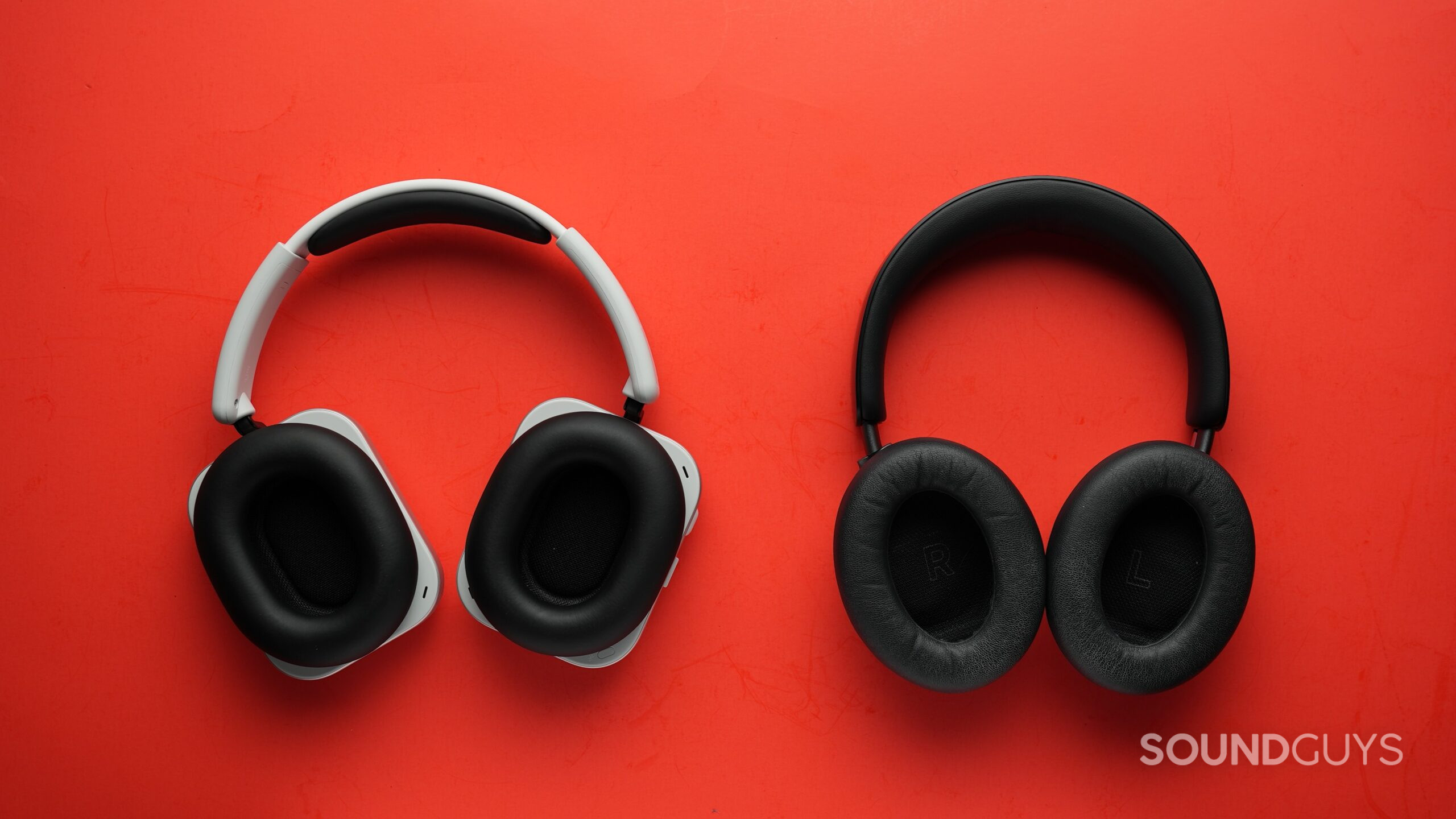
Battery life is where Nothing pulls way ahead. With ANC enabled, the Headphone (1) lasted an impressive 42 hours and 53 minutes in our tests, blowing past its 35-hour claim. Without ANC, it can stretch up to 80 hours. Bose clocks in at 27 hours and 37 minutes with ANC, which is respectable but nowhere near Nothing’s longevity.
Both headphones support fast charging, but Nothing’s implementation is more impressive: five minutes of charging yields five hours of playback without ANC, compared to Bose’s 2.5 hours from a 15-minute top-up. For long-distance travelers or marathon listeners, Nothing is the clear winner.
Do the Nothing Headphone (1) or Bose QuietComfort Ultra block noise better?
While Bose is renowned for its noise canceling pedigree, our testing shows that Nothing’s first over-ear effort is right there with it regarding raw attenuation. Both the Nothing Headphone (1) and Bose QuietComfort Ultra Headphones achieve an average total attenuation of 85% across the frequency range.
Loading chart ...
Looking at the chart, Bose (purple lines) shows a slight edge in low-frequency attenuation below 200Hz—great for rumbling engines. Meanwhile, Nothing (blue lines) holds a steadier performance across mids and highs, making it excellent for cutting down on conversations and office chatter. Both headphones have excellent passive isolation to get a good seal thanks to their ear pad designs, but Nothing’s memory foam cushions help create a particularly tight fit.
Both models have excellent transparency modes, allowing you to hear your surroundings naturally without needing to remove the headphones. In side-by-side testing, I slightly preferred Nothing’s transparency mode, as it sounded more natural and less processed, making ambient sounds clearer and easier to localize.
Do the Nothing Headphone (1) sound better than the Bose QuietComfort Ultra?
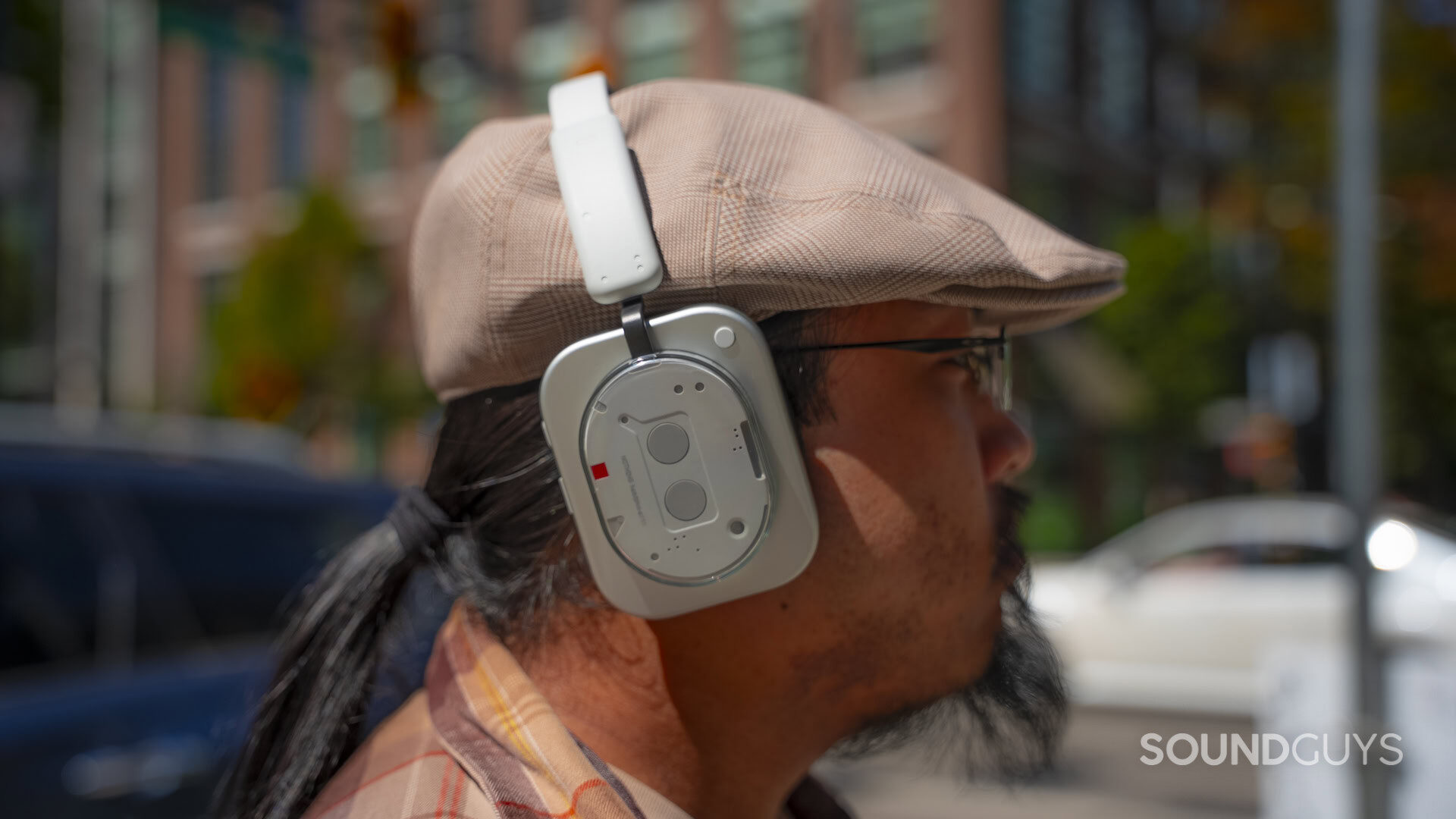
Bose’s tuning feels more polished out of the box, thanks to its CustomTune system that tailors playback to your unique ear shape. Music sounds full, with good balance across bass, mids, and treble. There’s a bit of extra low-end oomph, but it’s not overbearing.
By comparison, the Nothing Headphone (1) has a dark default sound signature: strong bass with slightly weak mids and very weak treble. Vocals feel recessed, and cymbals and guitars lose some brilliance. But the 8-band parametric EQ in the Nothing X app lets you dial things in precisely. With a little effort, I was able to bring out the clarity and balance I wanted.
Multi-Dimensional Audio Quality Scores (MDAQS)
According to our simulated panel of 200 untrained listeners, Bose scores higher in every category, offering a more balanced sound and stronger spatial imaging. But Nothing holds its own with good results. Most people should enjoy how both these headphones sound out of the box.
- Timbre (MOS-T) represents how faithfully the headphones reproduce the frequency spectrum and temporal resolution (timing information).
- Distortion (MOS-D) represents non-linearities and added noise: higher scores mean cleaner reproduction.
- Immersiveness (MOS-I) represents perceived source width and positioning: how well virtual sound sources are defined in three-dimensional space.
Objective Measurements
Loading chart ...
Looking at the frequency response chart, the Bose QuietComfort Ultra (yellow dotted line) stays closer to our headphone preference curve (purple dashed line) across the spectrum. It shows a gentle bass boost around 50Hz–100Hz and maintains a relatively flat midrange before following the treble rise above 2kHz. This translates to a sound that feels full, balanced, and clear out of the box, with vocals and instruments retaining their presence in mixes.
By contrast, the Nothing Headphone (1) (blue solid line) tracks our target curve well in the bass but dips noticeably in the midrange (200Hz–500Hz) and treble (above 2kHz). This creates a dark tonality, where vocals sound recessed and high-frequency details like cymbals or guitar overtones feel muted. While the bass is well-controlled and not overpowering, the overall signature lacks brightness and brilliance. Enabling ANC on the Nothing headphones slightly boosts bass but doesn’t address the treble roll-off.
Bose delivers a sound signature that works well for most listeners out of the box, while Nothing benefits heavily from the advanced 8-band EQ in its app to correct these dips.
Do the Nothing Headphone (1) or Bose QuietComfort Ultra have a better microphone?

Both sets of headphones deliver solid call performance. In ideal conditions, Nothing’s mic array sounds crisp and intelligible. It even does well in busy outdoor environments, thanks to AI-powered noise suppression. However, it struggles in rooms with lots of echo or reverb.
Bose’s mic system is more consistent. Even in reverberant spaces or windy conditions, it keeps your voice front and center. While neither is a replacement for a dedicated boom mic, Bose’s is more reliable across a wider range of environments.
Nothing Headphone (1) microphone demo (Ideal conditions):
Bose QuietComfort Ultra microphone demo (Ideal conditions):
Nothing Headphone (1) microphone demo (Reverb conditions):
Bose QuietComfort Ultra microphone demo (Reverb conditions):
Which microphone sounds better to you?
Nothing Headphone (1) vs Bose QuietComfort Ultra: Price and availability
The Nothing Headphone (1) launched on July 1, 2025, for $299.99 at Amazon. That puts it below most premium over-ear headphones, despite offering features like IP52 water resistance and a robust app experience.
The Bose QuietComfort Ultra Headphones are priced at $429 at Amazon. They’ve been on the market since late 2023 and sit firmly in the high-end category. You’re paying for Bose’s refinement and future-focused wireless features like aptX Lossless, but the lack of water resistance feels like a miss at this tier.
Should you get the Nothing Headphone (1) or Bose QuietComfort Ultra?
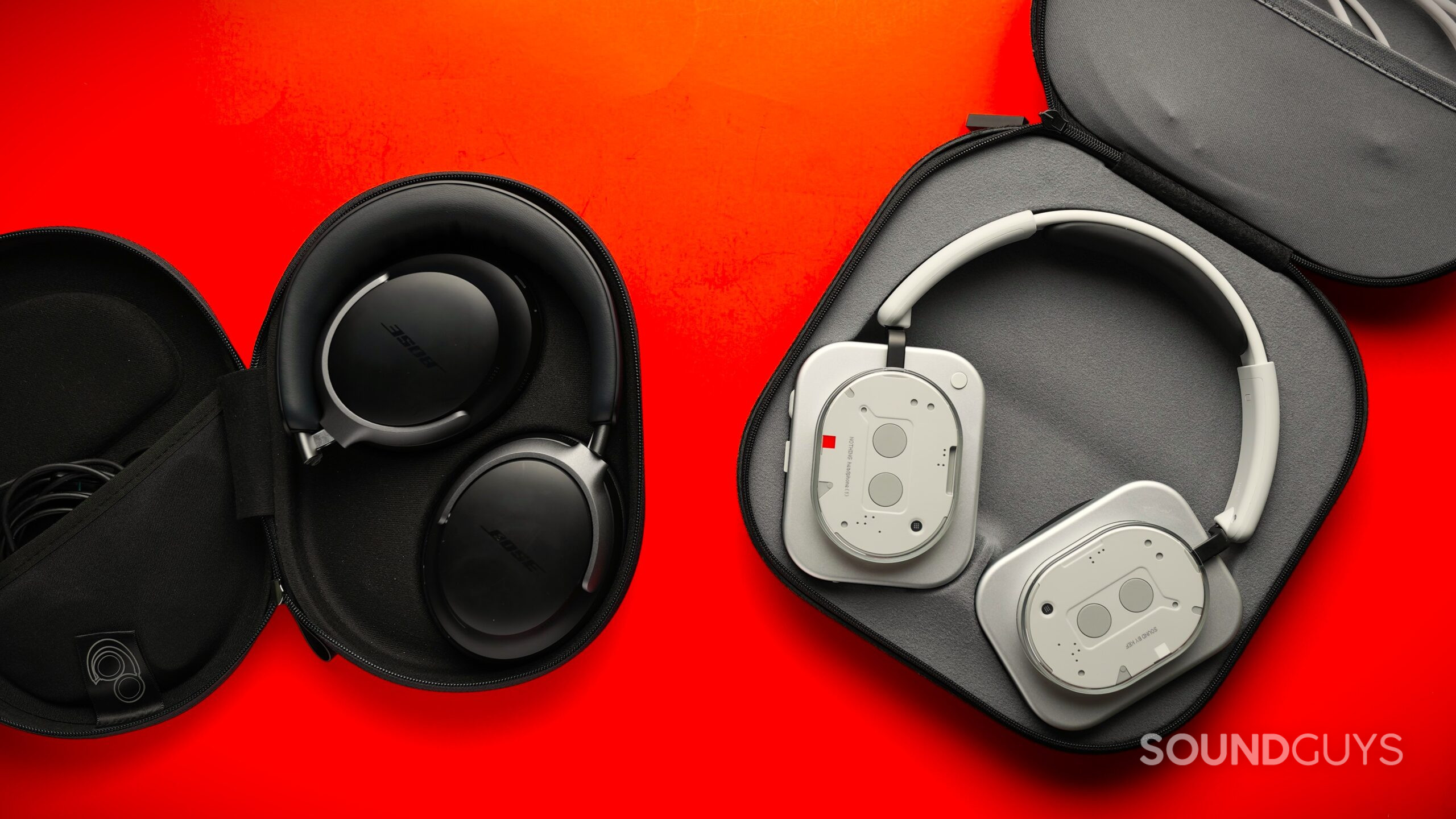
The Nothing Headphone (1) makes a strong case for itself as an affordable flagship alternative. Its longer battery life, unique design, and customization options in the Nothing X app stand out in a crowded field. The IP52 rating also gives it an edge for active users, and Nothing Phone (3) owners get exclusive features like Essential Space and Channel Hop.
The Bose QuietComfort Ultra Headphones justify their higher price with refined sound, lightweight comfort, and support for cutting-edge wireless codecs. While they don’t offer water resistance or USB-C audio playback, their polished performance and seamless user experience make them a safe bet for those who want headphones that just work.
Thank you for being part of our community. Read our Comment Policy before posting.